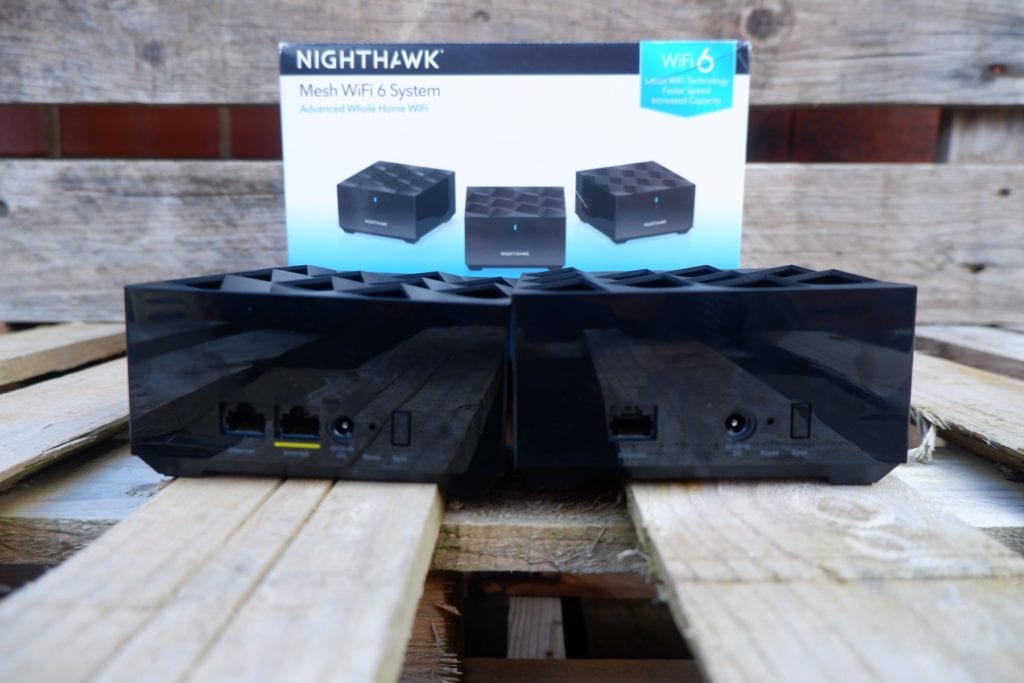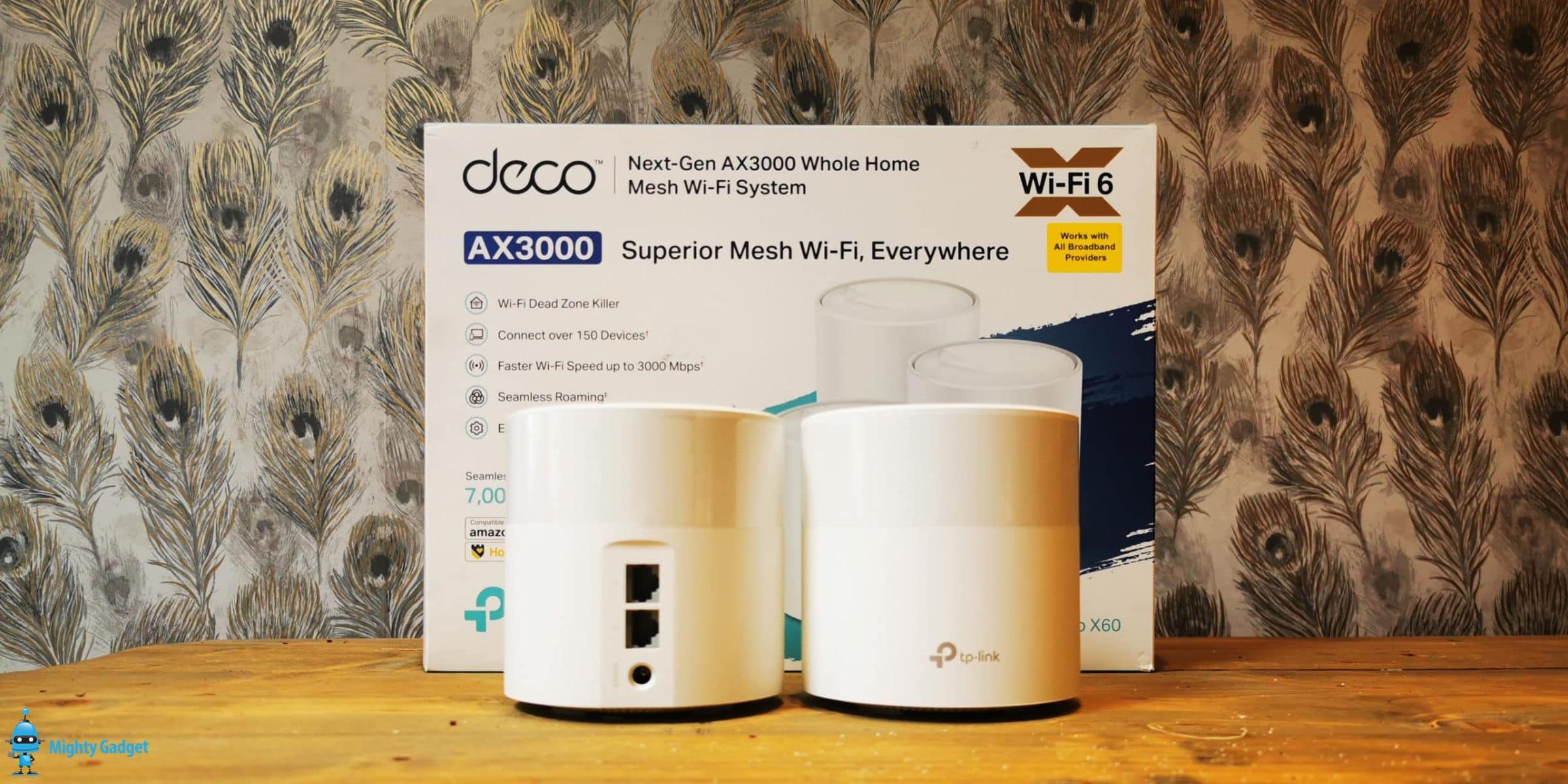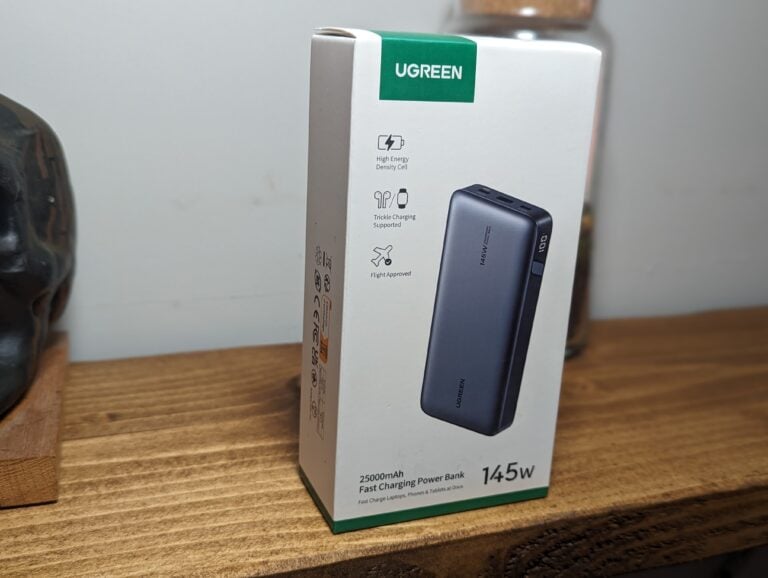Any links to online stores should be assumed to be affiliates. The company or PR agency provides all or most review samples. They have no control over my content, and I provide my honest opinion.
Mesh WiFi systems have solved many of the WiFi problems home users face. They allow you to extend your WiFi throughout your home seamlessly by plugging in mesh nodes or satellites.
Unlike the WiFi extenders of yesteryear, a mesh satellite retains the WiFi name and password, and the mesh system will work cohesively together, switching your device automatically and seamlessly from the router to the nearest satellite to ensure you retain connectivity and to maximise the WiFi speeds you can get.
Among the various elements that constitute these systems, the backhaul is one that has a significant impact on the overall performance.
With the recent announcement of WiFi 7 mesh systems, I think it is important to reexamine the different types of backhaul. The new eero Max 7 is a tri-band mesh system, while the Netgear Orbi 970 Series is a quad-band system.
In this guide, we will explore the three types of backhauls – dedicated, shared, and wired – used in mesh WiFi networks, their differences, and how they influence the network’s performance.
Understanding Backhaul
Backhaul refers to the backbone of a network that connects the main system with the peripheral subnetworks. In the context of a mesh WiFi system, the backhaul is the link between different nodes, facilitating data communication. The type of backhaul used can significantly affect the network’s speed and efficiency.

Many budget-friendly mesh systems utilise a shared WiFi backhaul. These systems typically operate on two frequency bands – 2.4GHz and 5GHz. Both the inter-node communication (backhaul) and the connection between nodes and devices (fronthaul) share the same 5GHz band. This sharing of bandwidth can potentially lead to network congestion, especially when there is a high demand for data transmission.
Dual-band WiFi mesh systems can still be excellent. You get roughly 50% of the speed for the satellites due to signal loss. In most cases, that means your Internet speed will still be excellent and capable of handling bandwidth-demanding applications such as streaming 4K content.
I have reviewed some superb dual-band systems, including the Netgear Nighthawk MK63 Mesh WiFi 6 System and TP-Link Deco X60 Mesh WiFi System.
Advantages:
- Less expensive
- Easier to set up
Disadvantages:
- Reduced bandwidth for client devices
- Higher potential for congestion
Tri-Band WiFi 7
Adding to the confusion you may face, the newer WiFi 6E and WiFi 7 systems introduce the new band. So these systems are tri-band by default, using 2.4GHz, 5GHz, and 6GHz.
A tri-band WiFi 6E/7 system will use a shared backhaul in the same way a dual-band WiFi 5/6 system uses one.
A recent example of a tri-band WiFi 7 mesh system is the newly announced eero Max 7 tri-band mesh WiFi router. I have also reviewed the Google Nest WiFi Pro, which is a tri-band WiFi 6E router.
Dedicated WiFi Backhaul
Mesh systems in the mid-to-premium price range often come with a dedicated WiFi backhaul. These are typically tri-band systems, with one 2.4GHz band and two 5GHz bands. One of the 5GHz bands is exclusively reserved for backhaul communication, leaving the remaining two bands for fronthaul activities. This setup reduces the chance of network congestion, thus improving the overall network performance.
Some examples of tri-band mesh systems I have reviewed include the Taotronics Tri-Band AC3000 Mesh WiFi 5 system and the Netgear Orbi 760 Tri-band WiFi 6 Mesh System.
Advantages:
- Reduced congestion
- High throughput for connected devices
Disadvantages:
- May require more advanced hardware
- Could be costlier
Quad-Band WiFi 7 / 6E

For a WiFi 6E or 7 system, you can get a quad-band mesh system. These will have 2.4GHz, two 5GHz and a 6GHz band. The 5GHz spare band is then used for the backhaul.
These systems use a second 5GHz band, rather than 6GHz, because 5GHz has a greater range than 6GHz and can penetrate through walls easier.
An example of a quad-band system is the excellent Netgear Orbi RBKE963 WiFi 6E mesh system, and they have just announced the Netgear Orbi 970 Series, which is WiFi 7.
Wired Ethernet Backhaul
Most mesh systems support a wired Ethernet backhaul. This setup involves physically connecting all the nodes using Ethernet cables. The advantage of a wired backhaul is that it provides a stable and high-speed connection between the nodes, thus improving the performance of the mesh network.
This effectively makes the mesh satellites work like access points.
This is a preferable solution, as the mesh satellites should offer the same performance as the router itself. Unfortunately, running ethernet around your home is often impractical, which is why mesh systems with their wireless backhaul have become so popular in the first place.
You can mix and match, though, so if it is possible to wire up one of your satellites, this will help improve the overall performance of your network.
Advantages:
- Highest throughput
- Least congestion
Disadvantages:
- Requires Ethernet cabling
- Less convenient to set up
The following table provides a comparison of the signal loss and performance difference between shared, dedicated, and wired backhauls:
To get the most out of your mesh WiFi system, you need to pay attention to several factors, such as the placement of nodes, distance between nodes, network topology, and the number of nodes.
| Backhaul Type | Wi-Fi Speed | Signal Loss | Distance | Expected Throughput |
|---|---|---|---|---|
| Dedicated | High | Low | 30-40 ft | High |
| Shared | Medium | Medium | 30-40 ft | Medium |
| Wired | Highest | None | N/A | Highest |
Optimal Placement and Distance
The placement of nodes plays a crucial role in the performance of the mesh network. Nodes should be placed in a way that they can communicate with each other without any obstructions. The distance between nodes should not be too far that the signal weakens, nor too close that they overlap and cause interference.
- Central Location: Place the main router in a central location.
- Height: Elevate mesh nodes for better signal propagation.
- Avoid Obstacles: Keep nodes away from walls and large objects.
Network Topology and Number of Nodes
The network topology and the number of nodes in a mesh system can significantly affect its performance. A star topology, where each node is directly connected to the main node, is generally more efficient compared to a daisy-chain topology, where nodes are connected in a series. As for the number of nodes, more isn’t always better; too many nodes can lead to network congestion.
A rough guide would be:
- Small to Medium Homes: 2-3 nodes
- Large Homes or Offices: 4-6 nodes
Personally, I think 3 nodes are suitable for most homes in the UK.
Internet Speed Requirements
Different online activities require different internet speeds. For instance, basic web browsing and emailing may need speeds up to 5 Mbps, while 4K streaming can require speeds up to 25 Mbps. It is essential to choose a mesh WiFi system that can cater to your specific needs.
WiFi Speeds for Various Functions (Minimum Recommendation)
- Email & Web Browsing: 1-5 Mbps
- HD Video Streaming: 5-10 Mbps
- 4K Video Streaming: 25 Mbps
- Online Gaming: 3-6 Mbps
- Large File Transfers: 100 Mbps and above (the higher, the better, 100Mbps is still very slow)
Conclusion
Choosing between a shared, dedicated, or wired backhaul for your mesh WiFi network depends on your specific needs and constraints.
While a shared WiFi backhaul can be a cost-effective solution, a dedicated WiFi or a wired Ethernet backhaul can significantly enhance your network performance.
By considering factors such as node placement, network topology, and your internet speed requirements, you can optimise your mesh WiFi network to get the best possible performance.
I personally use wired backhaul for my home, because I want the best performance possible wherever I am in my home. I’d strongly recommend you try and use wired connections if possible, but a dedicated backhaul system is often the best solution for most people wanting excellent WiFi performance around their home.
I am James, a UK-based tech enthusiast and the Editor and Owner of Mighty Gadget, which I’ve proudly run since 2007. Passionate about all things technology, my expertise spans from computers and networking to mobile, wearables, and smart home devices.
As a fitness fanatic who loves running and cycling, I also have a keen interest in fitness-related technology, and I take every opportunity to cover this niche on my blog. My diverse interests allow me to bring a unique perspective to tech blogging, merging lifestyle, fitness, and the latest tech trends.
In my academic pursuits, I earned a BSc in Information Systems Design from UCLAN, before advancing my learning with a Master’s Degree in Computing. This advanced study also included Cisco CCNA accreditation, further demonstrating my commitment to understanding and staying ahead of the technology curve.
I’m proud to share that Vuelio has consistently ranked Mighty Gadget as one of the top technology blogs in the UK. With my dedication to technology and drive to share my insights, I aim to continue providing my readers with engaging and informative content.







